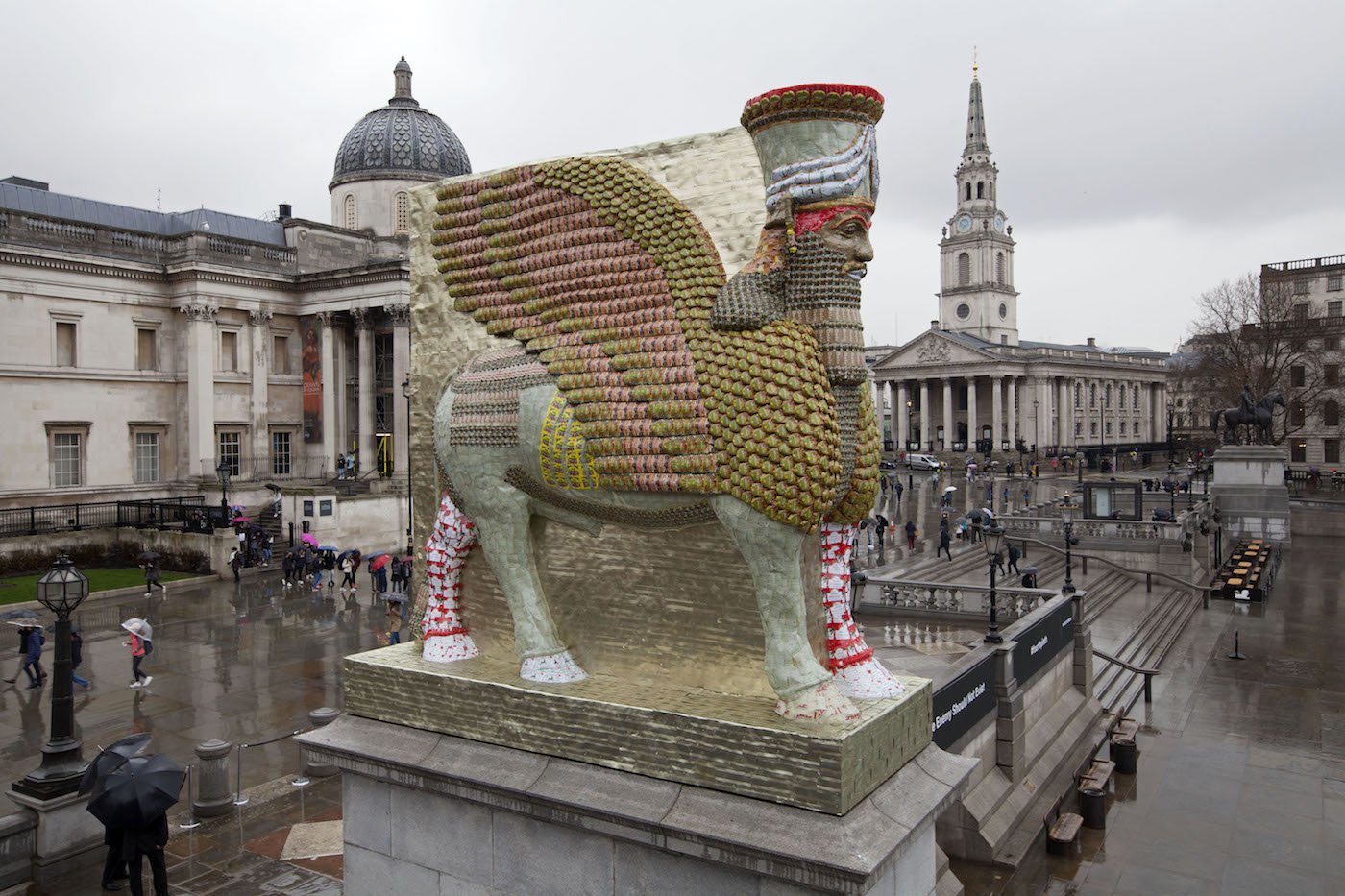03-05-2023 | The Power of The Palm
I wanted to talk about the date palm and its connection to Arabic culture, touching upon the ways in which the artistic community has celebrated its myriad functions, whilst beginning to explain its pertinence in terms of the storytelling traditions of Arabic communities. As Iraqi-American artist, Michael Rakowitz describes it:
‘…it is about all the elements of the palm: the dates, the shade the tree provides, the fallen leaves for woven furniture, and finally, the wood that can be used to expand the house as the family grows.’
The work Rakowitz made for the Fourth Plinth in London’s Trafalgar square back in 2018 was made from the salvage of date syrup cans. He explains that this ‘makes present the human, economic and ecological disasters caused by the Iraq Wars and their aftermath. In the late 1970s, the Iraqi date industry listed over 30 million date palms in the country. By the end of the 2003 Iraq War, only 3 million remained.’
I also include the work of The Irthi Contemporary Crafts Council based in Sharjah, whose work champions the traditional crafts of bedouin people. They provide economic support to craftspeople working across the Middle East and North Africa, whilst helping connect makers of various communities and safeguarding traditional practices for the next generation. With the expertise and skill of Emirati bedouin craftspeople, they produced installation works which incorporated traditional weaving techniques using date palm leaves. They showed at various design shows across Europe, and I include images of the installations that took place in Genoa and Milan last summer. You can see the multiplicity of uses found for the palm leaves to make decorative items, as well as the date fruit itself, a culturally significant food across the Arab world.



The reason the date palm is important to me personally is because it forms the basis of so many of the stories my father tells me of his homeland. Born halfway through the 20th century, the tribal societies of his birthplace had not yet joined to form the United Arab Emirates, and were without systems of record or certification. Instead of material in the way of photographs, or documentation of his childhood, he offers oral histories, the stories and symbols which connect my brother and I to our Arab heritage.
There is a Kenyan fable outlined by mythographer, Marina Warner in her book ‘From the Beast to the Blonde: On Fairy Tales and Their Tellers’. An allegory for storytelling itself, the tale refers to ‘tongue meats’ as utterly crucial to the nourishment of humans, feeding the soul and making the domestic space a comfortable home for it to dwell, she writes:
‘For the tongue meats that the poor man feeds the women are not material, of course. They are fairy tales, stories, jokes, songs; he nourishes them on talk, he wraps them in language; he banishes melancholy by refusing silence.’
I believe my father’s stories of the date palm hold the same power.
1. Rakowitz, Michael, ‘A House With A Date Palm Will Never Starve’, MICHAEL RAKOWITZ, 2018 <http://www.michaelrakowitz.com/a-house-with-a-date-palm-will-never-starve> [accessed 21 November 2022]
2. The Invisible Enemy Should Not Exist, Michael Rakowitz, 2018 (Fourth Plinth, Trafalgar Square photo courtesy of Mayor of London’s Office)
3. Craft x Flora, Irthi Contemporary Crafts Council,Salone del Mobile Cambi Auction House, 2022
4. Craft x Flora, Irthi Contemporary Crafts Council, Salone del Mobile Palazzo Litta, 2022
5. Warner, Marina, From the Beast to the Blonde: On Fairy Tales and Their Tellers (Vintage Digital, 2015)
6. My Father, photograph from The Hassan Family Archive, circa 1960s

